Phosphatidic Acid Sequesters Sec18p from cis-SNARE Complexes to Inhibit Priming
- PMID: 27364524
- PMCID: PMC5023487
- DOI: 10.1111/tra.12423
Phosphatidic Acid Sequesters Sec18p from cis-SNARE Complexes to Inhibit Priming
Abstract
Yeast vacuole fusion requires the activation of cis-SNARE complexes through priming carried out by Sec18p/N-ethylmaleimide sensitive factor and Sec17p/α-SNAP. The association of Sec18p with vacuolar cis-SNAREs is regulated in part by phosphatidic acid (PA) phosphatase production of diacylglycerol (DAG). Inhibition of PA phosphatase activity blocks the transfer of membrane-associated Sec18p to SNAREs. Thus, we hypothesized that Sec18p associates with PA-rich membrane microdomains before transferring to cis-SNARE complexes upon PA phosphatase activity. Here, we examined the direct binding of Sec18p to liposomes containing PA or DAG. We found that Sec18p preferentially bound to liposomes containing PA compared with those containing DAG by approximately fivefold. Additionally, using a specific PA-binding domain blocked Sec18p binding to PA-liposomes and displaced endogenous Sec18p from isolated vacuoles. Moreover, the direct addition of excess PA blocked the priming activity of isolated vacuoles in a manner similar to chemically inhibiting PA phosphatase activity. These data suggest that the conversion of PA to DAG facilitates the recruitment of Sec18p to cis-SNAREs. Purified vacuoles from yeast lacking the PA phosphatase Pah1p showed reduced Sec18p association with cis-SNAREs and complementation with plasmid-encoded PAH1 or recombinant Pah1p restored the interaction. Taken together, this demonstrates that regulating PA concentrations by Pah1p activity controls SNARE priming by Sec18p.
Keywords: Pah1p; SNARE; Sec17; diacylglycerol; fusion; lipin; phosphatidic acid; priming.
© 2016 John Wiley & Sons A/S. Published by John Wiley & Sons Ltd.
Figures
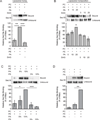

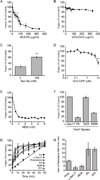

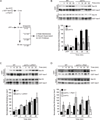
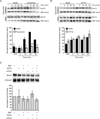

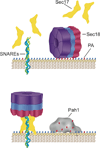
Similar articles
-
Yeast lipin 1 orthologue pah1p regulates vacuole homeostasis and membrane fusion.J Biol Chem. 2012 Jan 13;287(3):2221-36. doi: 10.1074/jbc.M111.317420. Epub 2011 Nov 25. J Biol Chem. 2012. PMID: 22121197 Free PMC article.
-
Homotypic vacuolar fusion mediated by t- and v-SNAREs.Nature. 1997 May 8;387(6629):199-202. doi: 10.1038/387199a0. Nature. 1997. PMID: 9144293
-
A small-molecule competitive inhibitor of phosphatidic acid binding by the AAA+ protein NSF/Sec18 blocks the SNARE-priming stage of vacuole fusion.J Biol Chem. 2019 Nov 15;294(46):17168-17185. doi: 10.1074/jbc.RA119.008865. Epub 2019 Sep 12. J Biol Chem. 2019. PMID: 31515268 Free PMC article.
-
Yeast vacuole fusion: a model system for eukaryotic endomembrane dynamics.Autophagy. 2008 Jan;4(1):5-19. doi: 10.4161/auto.5054. Epub 2007 Sep 12. Autophagy. 2008. PMID: 17932463 Review.
-
Involvement of LMA1 and GATE-16 family members in intracellular membrane dynamics.Biochim Biophys Acta. 2003 Aug 18;1641(2-3):145-56. doi: 10.1016/s0167-4889(03)00086-7. Biochim Biophys Acta. 2003. PMID: 12914955 Review.
Cited by
-
Interplay Between SNX27 and DAG Metabolism in the Control of Trafficking and Signaling at the IS.Int J Mol Sci. 2020 Jun 15;21(12):4254. doi: 10.3390/ijms21124254. Int J Mol Sci. 2020. PMID: 32549284 Free PMC article. Review.
-
Copper blocks V-ATPase activity and SNARE complex formation to inhibit yeast vacuole fusion.Traffic. 2019 Nov;20(11):841-850. doi: 10.1111/tra.12683. Epub 2019 Sep 2. Traffic. 2019. PMID: 31368617 Free PMC article.
-
Use of Surface Plasmon Resonance (SPR) to Determine Binding Affinities and Kinetic Parameters Between Components Important in Fusion Machinery.Methods Mol Biol. 2019;1860:199-210. doi: 10.1007/978-1-4939-8760-3_12. Methods Mol Biol. 2019. PMID: 30317506 Free PMC article.
-
Emergence of Dip2-mediated specific DAG-based PKC signalling axis in eukaryotes.Elife. 2025 May 6;14:RP104011. doi: 10.7554/eLife.104011. Elife. 2025. PMID: 40327034 Free PMC article.
-
Phosphatidic acid induces conformational changes in Sec18 protomers that prevent SNARE priming.J Biol Chem. 2019 Mar 1;294(9):3100-3116. doi: 10.1074/jbc.RA118.006552. Epub 2019 Jan 7. J Biol Chem. 2019. PMID: 30617180 Free PMC article.
References
-
- Jahn R, Sudhof TC. Membrane fusion and exocytosis. Annu. Rev. Biochem. 1999:68863–68911. - PubMed
-
- Jahn R, Lang T, Südhof TC. Membrane fusion. Cell. 2003;112(4):519–533. - PubMed
-
- Mayer A, Wickner W, Haas A. Sec18p (NSF)-driven release of Sec17p (alpha-SNAP) can precede docking and fusion of yeast vacuoles. Cell. 1996;85(1):83–94. - PubMed
Publication types
MeSH terms
Substances
Grants and funding
LinkOut - more resources
Full Text Sources
Other Literature Sources
Molecular Biology Databases
Research Materials

